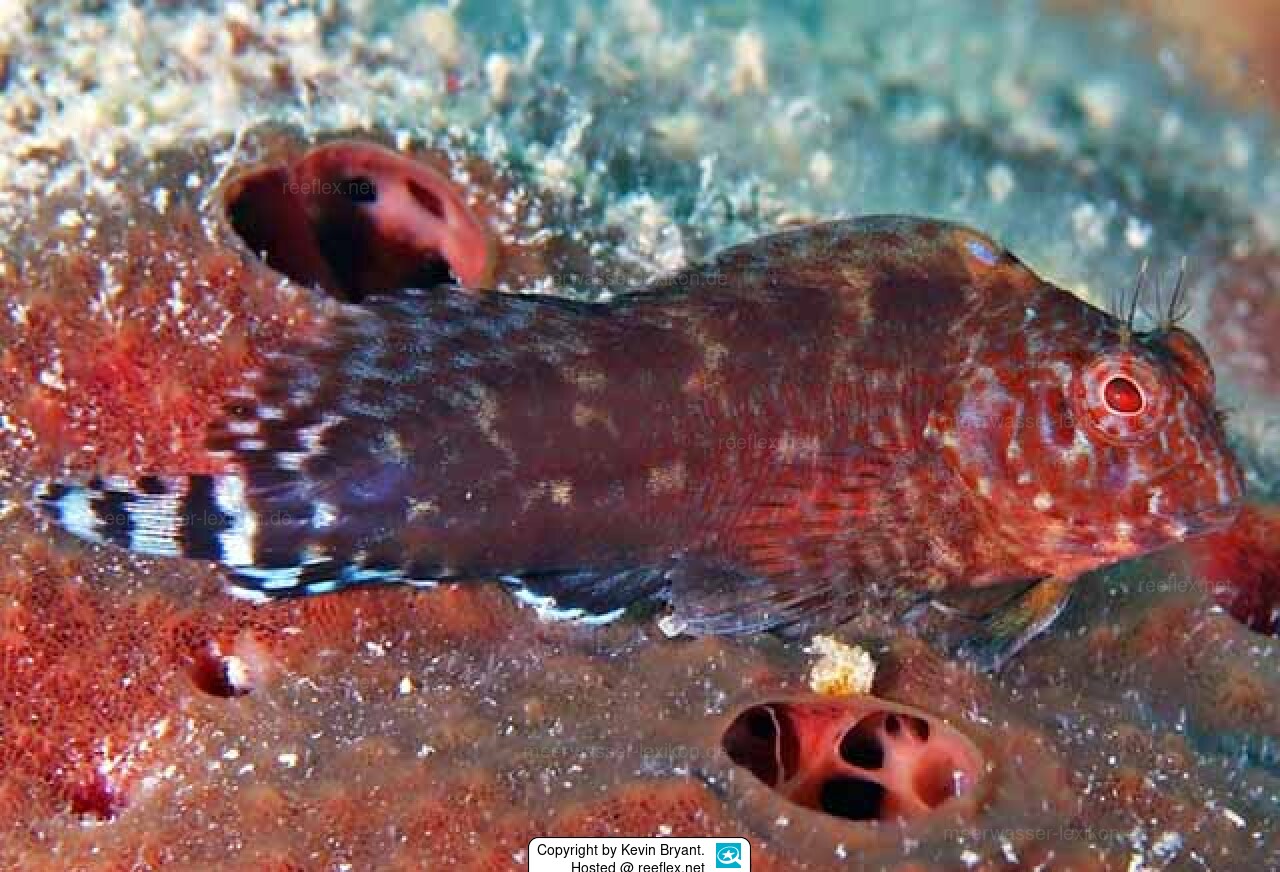Info
Hypleurochilus caudovittatus is a groundfish species that lives on rocky shores and oyster reefs in holes and crevices, often found in shallow, nearshore waters in rubble on reefs and sand areas..
The body and fins of the zebra blenny are dark grayish brown; a dark bluish spot is visible on the membrane between the first two dorsal spines.
The caudal fin is white, with a black spot at the base and 3 - 5 black stripes.
Jumping guard
A jumping guard prevents (nocturnal) fish from jumping out.
Wrasses, blennies, hawkfishs and gobies jump out of an unprotected tank in fright if their night rest is disturbed, unfortunately these jumpers are found dried up in the morning on carpets, glass edges or later behind the tank.
https://www.korallenriff.de/en/article/1925_5_Jump_Protection_Solutions_for_Fish_in_the_Aquarium__5_Net_Covers.html
A small night light also helps, as it provides the fish with a means of orientation in the dark!
The body and fins of the zebra blenny are dark grayish brown; a dark bluish spot is visible on the membrane between the first two dorsal spines.
The caudal fin is white, with a black spot at the base and 3 - 5 black stripes.
Jumping guard
A jumping guard prevents (nocturnal) fish from jumping out.
Wrasses, blennies, hawkfishs and gobies jump out of an unprotected tank in fright if their night rest is disturbed, unfortunately these jumpers are found dried up in the morning on carpets, glass edges or later behind the tank.
https://www.korallenriff.de/en/article/1925_5_Jump_Protection_Solutions_for_Fish_in_the_Aquarium__5_Net_Covers.html
A small night light also helps, as it provides the fish with a means of orientation in the dark!







 Kevin Bryant, USA
Kevin Bryant, USA











